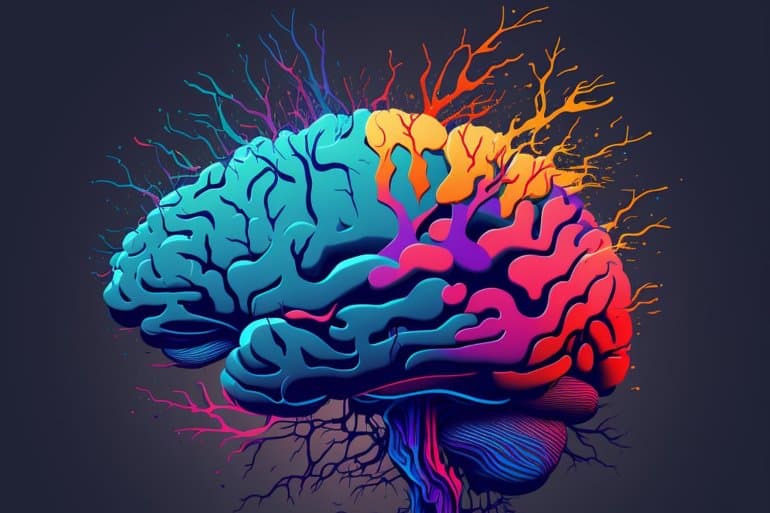Summary: Fluoxetine (Prozac), a common antidepressant, was found to enhance the erasure of learned fear responses and facilitate spatial pattern learning in mice. The study also found the TrkB receptor in PV+ interneurons plays a crucial role in these effects, which may offer new possibilities for the development of psychiatric treatments targeting brain plasticity.
Source: University of Eastern Finland
A recent study, published in Neuropsychopharmacology, conducted by researchers from the University of Helsinki and the University of Eastern Finland, sheds light on the mechanisms of neural plasticity induced by the antidepressant fluoxetine.
Previous research by the same team showed that chronic treatment with antidepressants increased neural plasticity through direct binding to neurotrophic receptor TrkB, but the mechanism of relevant neural circuits remained unknown.
In the current study, the researchers conducted a classical fear conditioning paradigm with mice and discovered that fluoxetine facilitated the erasure of learned fear responses, as well as decreased the spontaneous reactivation of these responses.
Additionally, the mice exhibited faster learning of spatial patterns in pairwise tests when treated with fluoxetine, particularly when the task was reversed.
However, the effects were diminished or absent in mice with lower TrkB receptor expression in their PV+ interneurons, an important class of GABAergic inhibitory neurons, responsible for regulating the activity of excitatory neurons and playing a crucial role in various functions, such as cognitive processes and memory.
The researchers also analyzed gene expression specifically in PV+ interneurons following fluoxetine treatment. They found changes related to GABAergic synapses, axon guidance, and enzymes involved in the formation of perineuronal net (PNN), an extracellular matrix surrounding PV+ interneurons, which plays a role in regulating neuronal plasticity.

Moreover, they observed a decrease in the number of PV+ interneurons with PNN and a reduction in the intensity of PNN following fluoxetine treatment, indicating enhanced plasticity of PV+ interneurons. However, this effect was attenuated in mice with lower TrkB receptor expression in PV+ interneurons.
The results of the study suggest that the TrkB receptor in PV+ interneurons is primarily responsible for the increased reversal learning observed with fluoxetine treatment.
These findings may offer new perspectives for the development for psychiatric diseases and pave the way for new medications targeting brain plasticity via PV+ interneurons.
The study was carried out by Professor Eero Castren’s research group at the University of Helsinki and Docent Juzoh Umemori at the University of Eastern Finland.
Summary was written with the assistance of ChatGPT AI technology.
About this brain plasticity research news
Author: Maj Vuorre
Source: University of Eastern Finland
Contact: Maj Vuorre – University of Eastern Finland
Image: The image is in the public domain
Original Research: Open access.
“Activation of TrkB in Parvalbumin interneurons is required for the promotion of reversal learning in spatial and fear memory by antidepressants” by Juzoh Umemori et al. Neuropsychopharmacology
Abstract
Activation of TrkB in Parvalbumin interneurons is required for the promotion of reversal learning in spatial and fear memory by antidepressants
Critical period-like plasticity (iPlasticity) can be reinstated in the adult brain by several interventions, including drugs and optogenetic modifications. We have demonstrated that a combination of iPlasticity with optimal training improves behaviors related to neuropsychiatric disorders.
In this context, the activation of TrkB, a receptor for BDNF, in Parvalbumin-positive (PV+) interneurons has a pivotal role in cortical network changes. However, it is unknown if the activation of TrkB in PV+ interneurons is important for other plasticity-related behaviors, especially for learning and memory.
Here, using mice with heterozygous conditional TrkB deletion in PV+ interneurons (PV-TrkB hCKO) in IntelliCage and fear erasure paradigms, we show that chronic treatment with fluoxetine, a widely prescribed antidepressant drug that is known to promote the activation of TrkB, enhances behavioral flexibility in spatial and fear memory, largely depending on the expression of the TrkB receptor in PV+ interneurons.
In addition, hippocampal long-term potentiation was enhanced by chronic treatment with fluoxetine in wild-type mice, but not in PV-TrkB hCKO mice.
Transcriptomic analysis of PV+ interneurons after fluoxetine treatment indicated intrinsic changes in synaptic formation and downregulation of enzymes involved in perineuronal net formation.
Consistently, immunohistochemistry has shown that the fluoxetine treatment alters PV expression and reduces PNNs in PV+ interneurons, and here we show that TrkB expression in PV+ interneurons is required for these effects.
Together, our results provide molecular and network mechanisms for the induction of critical period-like plasticity in adulthood.







